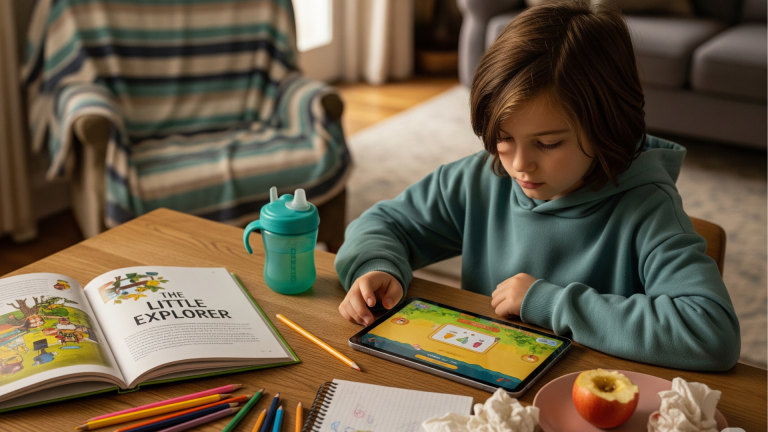What Is Parenting? A Complete Guide for Modern Families
Parenting is one of the oldest jobs on the planet. It should be simple, yet it can feel like trying to fix a plane while flying it. Work is busier, screens are everywhere, and every week a new “method” trends on social media. No wonder it feels complex.
A lot of people carry narrow assumptions. Some think parenting equals discipline. Others think it’s mostly about providing, as long as the fridge is stocked and the bills are paid. Both are part of it, but neither is the whole picture.
Here is the thesis. Parenting is the long game of guiding a human from total dependence to real independence. It is daily care, emotional connection, boundaries that teach self-control, and opportunities to grow. This guide lays out what that looks like, why it matters, and how to shape an approach that fits your family.
Quick pause. You do not need to be perfect. You need to be consistent enough, connected enough, and willing to keep learning. That is it.
What Is Parenting?
At its core, parenting is the ongoing work of meeting needs and teaching skills so a child can thrive without you one day. That includes physical care, safety, emotional support, social learning, problem-solving, and values.
There is a psychological piece too. From the first months, kids learn through serve-and-return interactions. A baby coos, a parent responds, the baby coos back. That back-and-forth builds brain architecture and teaches that the world is responsive and safe. Those micro-moments stack up into trust, language, and self-regulation. (harvard.edu)
Parenting is not “done” at 18. The role shifts, but it remains a relationship where you support, guide, and let go in age-appropriate steps.
Modern life changes the context. We live more online. Many families have two working caregivers or a single parent carrying most of the load. Extended family might live far away. Culture moves faster. The job is the same, the landscape is different. The solution is not to chase every trend. It is to understand the principles and apply them in today’s reality.
If you feel behind, you are not. You are parenting in the most tech-dense era in history. You are learning on the job like everyone else.
The Core Functions of Parenting
Think of parenting like a five-part system. You do all five over and over, adjusting for age and temperament.
1) Meet Basic Needs
Food, sleep, health, safety, shelter. These are the floor. Without them, nothing else sticks. Routines help. Predictable meals and bedtimes reduce conflict and boost cooperation. When kids know what to expect, they fight you less.
2) Build Emotional Security and Attachment
Kids do better when they know someone will notice their signals and respond. You do not have to jump up for every want. You do want to consistently meet real needs and be emotionally available. Those serve-and-return moments train the brain for focus, language, and self-calming. (harvard.edu)
Tiny reboot. If today was mostly firefighting, try one five-minute bubble of full attention. Eye contact, warmth, no phone. It pays off.
3) Socialize and Teach Values
Children are not born knowing how to share, wait, or tell the truth when it is hard. They learn by watching you and by practicing with guidance. Narrate your thinking. Explain the “why” behind rules. Use natural consequences when possible. You are raising a future neighbor, friend, teammate, and partner.
4) Guide Independence and Responsibility
The goal is not compliance. It is self-control and self-direction. Invite kids into problem solving. Offer choices you can live with. Hand over age-appropriate jobs, then let the outcome teach. You want a child who can manage themselves when you are not there.
5) Prepare for the Future
School skills matter, but so do executive functions. Planning, delaying gratification, handling frustration, and working with others will carry them further than any single grade. You build these through routines, expectations, and supportive coaching.
Parenting Styles Framework (Overview)
Psychologist Diana Baumrind’s classic framework, later extended by other researchers, organizes parenting by two key traits: warmth and structure. The mix of those traits produces four styles. (iastate.pressbooks.pub)
Good news. No one lives in one box all the time. The point is to aim for authoritative more often, especially when the heat is on.
Deeper dive to: 4 Parenting Styles Framework
Modern Parenting Approaches
The classic styles describe the “tone” of your parenting. Modern approaches contain tools and tactics that fit inside that tone. Here are the two you will see most often, plus two honorable mentions.
Gentle Parenting
Gentle parenting emphasizes respect, empathy, and collaborative problem solving. It avoids harsh punishments and focuses on connection first, then correction. The risk is drifting into permissiveness if boundaries get fuzzy. The win is strong communication and trust.
If you want a deeper dive into what this looks like in practice, check out our full guide on Gentle Parenting Explained: Benefits, Criticism, and How to Start.
Quick reset. Gentle does not mean lax. You can be warm and still say no.
Positive Parenting
Positive parenting centers on encouragement, teaching skills, and consistent follow-through. It uses natural and logical consequences, routines, and praise that focuses on effort and strategies. Done well, it looks a lot like authoritative parenting in action.
For more hands-on ways to try it at home, see our guide on Positive Parenting: Practical Tips to Build Stronger Bonds.
Attachment Parenting
Attachment parenting prioritizes closeness and responsiveness, especially in the early years. It often includes babywearing, breastfeeding when possible, and co-sleeping choices. You can use attachment principles without following every practice. The core idea is responsiveness and secure connection.
Montessori-Inspired Parenting
Montessori at home stresses independence, order, and respect for a child’s pace. It uses prepared environments and real tasks. You can borrow the mindset even without a full Montessori setup: child-sized tools, clear shelves, and let the child try first.
Want to dig deeper about Montessori? here What Is Montessori? A Beginner’s Guide for Modern Moms.
Why Parenting Matters More Than Ever Today
What the data says. Meta-analyses pooling thousands of studies find that authoritative parenting is associated with better academic outcomes and fewer behavior problems. Authoritarian and neglectful patterns are associated with worse outcomes, with some variation by culture and context. Effects are usually small to moderate, which makes sense because kids are influenced by many factors, but the pattern is consistent.
Early experiences matter. Responsive back-and-forth interaction builds neural circuits for language, attention, and social skills. You do not need fancy toys. You need warmth, eye contact, and time.
Screens are part of life. The American Academy of Pediatrics does not offer a one-size limit for every family. They recommend a Family Media Plan that fits your values, schedules, and your child’s age. The focus is quality, timing, and balance, and preserving sleep, activity, and relationships. Co-view, when possible, keep bedrooms device-free, and protect bedtime.
Tension-breaker. The goal is not a perfect parent. The goal is a parent with a plan.
Not sure what screen time really means? What Is Screen Time, Really?.
Common Parenting Myths
Myth 1: Good parenting means being strict.
Clarity matters. Harshness backfires. The research pattern is clear. Structure plus warmth works better than structure without warmth. Authoritative tends to beat authoritarian for both behavior and academics in the long run.
Myth 2: Parenting should come naturally.
Parts of it will. Many parts are learned skills. You did not “just know” how to install a car seat or coach a tantrum. You learned. Skills reduce stress. Practice beats instinct when instinct is overwhelmed.
Myth 3: Technology always ruins kids.
Tech can help or harm depending on content, timing, and what it replaces. Prioritize sleep, physical play, reading, and face-to-face time. Use a Family Media Plan to make those priorities visible.
Myth 4: There is only one right way to parent.
Families differ. Cultures differ. Children differ. Stick to principles that travel well, like connection, reasonable limits, and teaching skills. Then adjust to your child’s temperament and your family’s reality.
If a rule works for your neighbor but explodes in your house, the rule is wrong for your house. Not you.
How to Start Defining Your Own Parenting Style
Let’s move from theory to a plan you can use this week.
Step 1: Clarify Your Values
Pick three words that describe the adult you are trying to raise. Examples: kind, resilient, responsible. Keep those words visible. Rules and routines should point toward them.
Try this tonight. Ask yourself, “What lesson is this moment teaching?” If it does not point toward your three words, adjust how you respond.
Step 2: Observe Your Child’s Needs and Temperament
Some kids are slow to warm up. Some charge ahead. Some need extra help with transitions. Notice patterns. The goal is not to change who they are. It is to give them the right scaffolding.
Watch for these signals.
Step 3: Commit to Authoritative Habits
You are aiming for warm and firm.
The research connects these behaviors to better outcomes, even if the effect sizes are small. Small gains, done daily, compound.
Step 4: Make a Family Media Plan
Screens are a reality. Treat them like any other tool.
The AAP provides a customizable plan that helps you align rules to your child’s age and your family’s schedule. HealthyChildren.org
If you are dreading a fight, switch to “when-then.” When the backpack is put away and shoes are by the door, then you can watch your show.
Step 5: Use the “Three-Minute Morning” and “Five-Minute Night”
You will not fix everything at once. You can create anchors.
Consistency beats intensity. Your child’s brain trusts what it experiences often.
Step 6: Keep Learning
You do not need to read every book. Build a small stack of reliable resources and return to them. A good place to start is our research-based guide on What Is Good Parenting? 10 Principles Backed by Research.
Conclusion
Parenting is not a performance. It is a relationship that teaches a human to be capable and kind. If you remember nothing else, remember this: connection plus boundaries outperforms extremes. Be warm. Be clear. Follow through.
You will have bad days. Repair and move on. You will change your mind. That is growth, not failure. A family is a system that keeps learning.
When you are ready to dive deeper, choose your next step:
You are allowed to make this your own. The best parenting system is the one your family can actually run.








